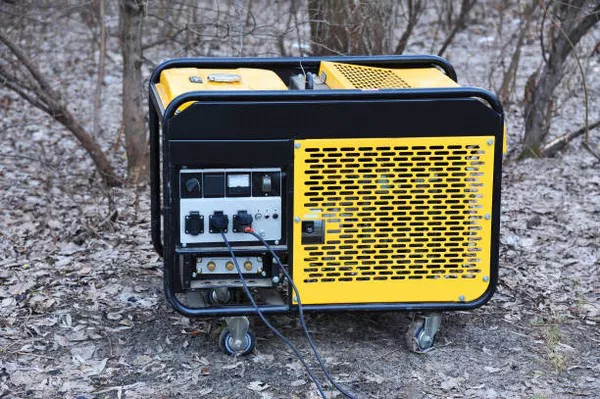Generators play a pivotal role in our modern world, providing a reliable source of electrical power to homes, businesses, and industries. These essential devices are powered by a variety of energy sources, each with its unique set of advantages and limitations. In this article, we will delve into the intricate mechanisms that drive generators, exploring the diverse ways in which these machines convert energy into electricity.
Principles of Electricity Generation
At the heart of every generator lies the fundamental principle of electromagnetic induction, discovered by Michael Faraday in the early 19th century. This principle forms the basis for converting mechanical energy into electrical energy. Generators consist of a rotating component, typically a rotor, within a magnetic field. As the rotor spins, it induces a flow of electrons in the wire windings, generating an electrical current.
Energy Sources for Generators
Generators can be powered by various energy sources, each with its own set of characteristics and applications. The primary sources of energy for generators include fossil fuels, renewable energy, and even human effort.
Fossil Fuels: Fossil fuel-powered generators have been a staple in electricity generation for decades. The combustion of fossil fuels, such as coal, natural gas, and diesel, produces the mechanical energy required to turn the generator’s rotor. This process is highly efficient but raises environmental concerns due to carbon emissions and finite resource depletion.
Renewable Energy: In recent years, there has been a growing shift towards sustainable and eco-friendly energy sources. Renewable energy generators harness the power of nature, converting sunlight, wind, water, and geothermal heat into electricity. Solar panels, wind turbines, hydroelectric dams, and geothermal plants are all examples of generators that utilize renewable resources. These sources offer a cleaner alternative to fossil fuels, contributing to the global effort to combat climate change.
Human Power: On a smaller scale, generators can be powered by human effort. Pedal-powered generators, for instance, convert the mechanical energy generated by pedaling into electricity. While not as common as fossil fuel or renewable energy sources, human-powered generators find applications in niche areas, such as off-grid living or emergency situations.
Internal Combustion Engines
For generators powered by fossil fuels, internal combustion engines serve as the workhorse. These engines convert the chemical energy stored in fuels into mechanical energy through controlled combustion. The most common types of internal combustion engines used in generators are spark-ignition engines (commonly found in gasoline generators) and compression-ignition engines (typical in diesel generators).
In a spark-ignition engine, fuel and air are mixed, compressed, and ignited by a spark plug. The resulting explosion forces a piston downward, creating mechanical energy. In a compression-ignition engine, the air is compressed, raising its temperature to the point where diesel fuel injected into the cylinder ignites spontaneously.
Turbines: Converting Fluid Energy into Mechanical Energy
Generators powered by steam or water utilize turbines as their primary mechanical component. A turbine is a rotary device that extracts energy from a fluid flow and converts it into useful work. Steam turbines, for example, are common in power plants where water is heated to produce steam, and the high-pressure steam then drives the turbine blades, generating mechanical energy to turn the generator.
Hydroelectric generators, on the other hand, use the kinetic energy of flowing water to turn the turbine, producing electricity. The force of water falling or flowing causes the turbine blades to rotate, transforming the energy of moving water into mechanical energy.
The Role of Magnetism
Magnetism is a fundamental force harnessed in generators to induce the flow of electrons in the wire windings. The rotor, or armature, of a generator contains conductive wire windings, which, when rotated within a magnetic field, generate an electromotive force (EMF). This force, commonly referred to as voltage, is what drives the flow of electrons, creating an electric current.
The type of generator determines the arrangement of magnets and coils. Alternating current (AC) generators use slip rings and brushes to maintain a continuous connection to the rotating coil, allowing for a fluctuating magnetic field and, consequently, alternating current. In contrast, direct current (DC) generators use a commutator, which reverses the current direction as the coil rotates, resulting in a constant flow of direct current.
Control Systems and Voltage Regulation
Generators are equipped with control systems to regulate the voltage output and ensure a stable supply of electricity. Voltage regulation is critical to prevent damage to electrical equipment and appliances connected to the generator. Automatic voltage regulators (AVRs) monitor the output voltage and adjust the excitation current supplied to the generator’s field winding, maintaining a consistent voltage level.
Conclusion
Generators are complex machines that play a crucial role in meeting our ever-growing demand for electrical power. Whether powered by fossil fuels, renewable energy sources, or human effort, these devices operate on the principles of electromagnetic induction and mechanical energy conversion. As our understanding of sustainable energy evolves, so too will the technologies that power generators, paving the way for a cleaner, more efficient future in electricity generation.

